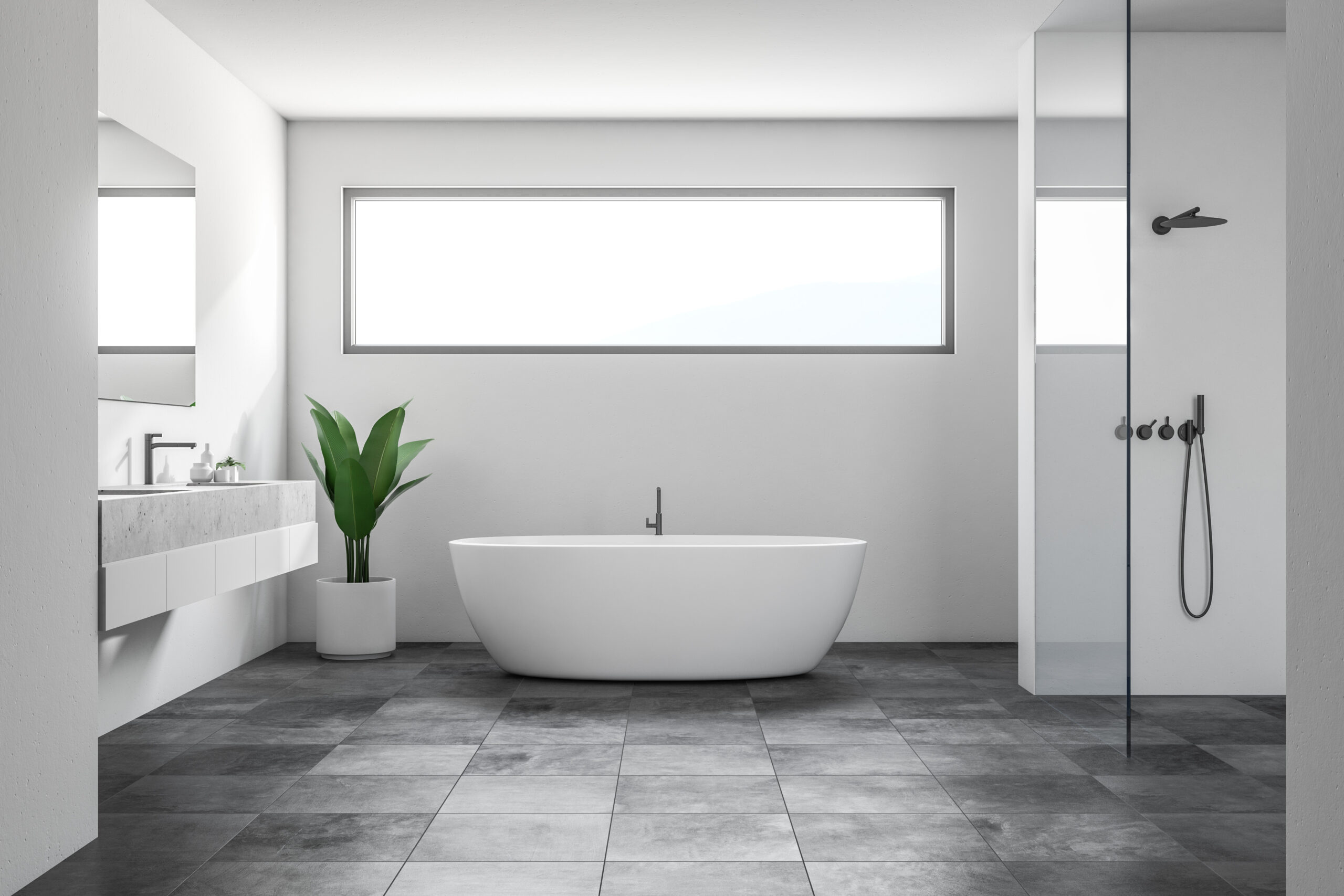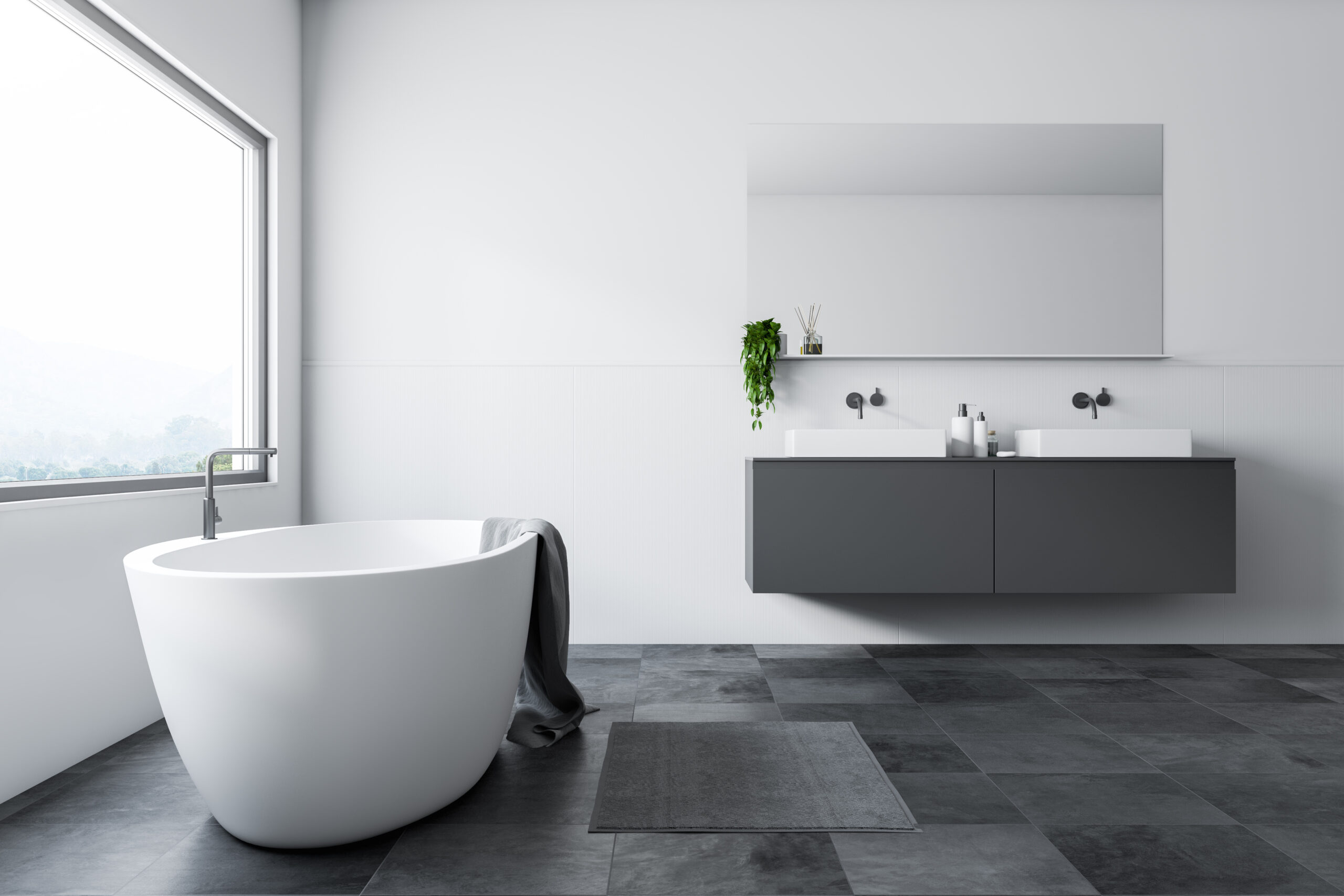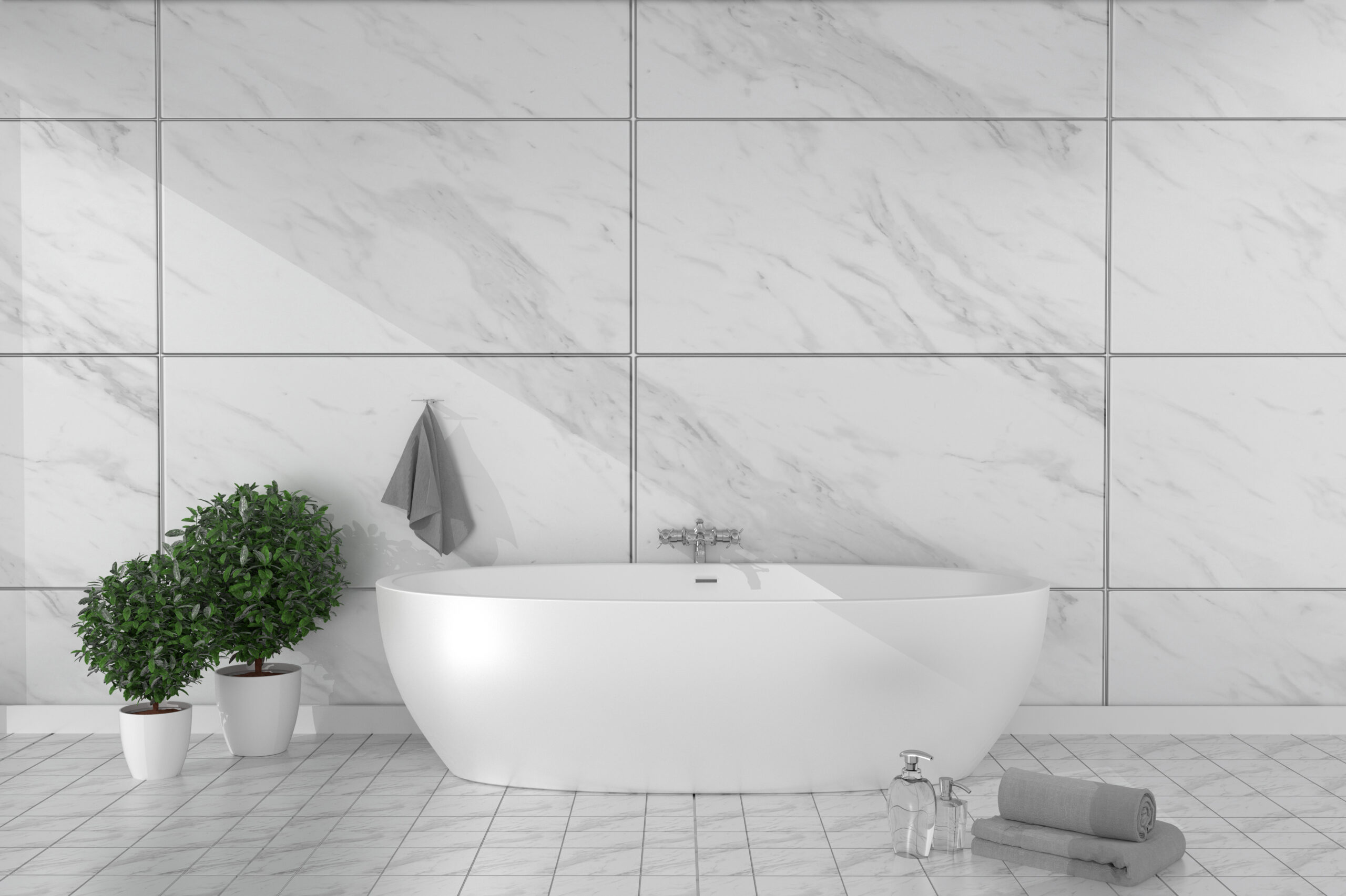The bathroom is one of the most important rooms in our homes, and its design cannot be ignored.
Although it may seem trivial at first glance, choosing the right floor tiles for your bathroom is very important, both in terms of tile type and design.
Most of us only look at price or color, but few of us consider the material characteristics, which ultimately prove to be the most important. When you go to stores or online floor tile shops, you will find all kinds of materials: glossy or matte porcelain, stone, quartz, ceramic, and more.
For the bathroom, almost all types of flooring can be used: non-porcelain or porcelain floor tiles, travertine, stone, or quartz. In the end, your preferences are what matter most in making a decision, but the tips below will help you define what you want and what suits you best.
If you are not familiar with interior design, it is very possible that you may not know what to think about first when it comes to choosing floor tiles. The wide range of options on the market can seem overwhelming.
It is important to know that interior floor tiles can be divided into various types based on the material they are made of, as well as the manufacturing process and their hardness. Therefore, it is extremely important to pay attention to the materials we use and make sure they are the most suitable for our home.
Porcelain floor tiles are ideal for the exterior and interior, especially due to the material processing. Porcelain floor tiles are extremely durable, whether for residential or commercial spaces. They are ideal for those who prefer a natural look, such as wood.
The bathroom is a place where frequent cleaning is absolutely necessary, and for this, we need to use fairly strong substances. Therefore, tiles are the preferred material for bathroom design due to their increased resistance. Furthermore, tiles have a clean and fresh appearance and are easy to maintain, being cleaned and sanitized easily.
While floor tiles are water-resistant, they are not completely waterproof. Therefore, it is important to use a kit for isolating the surface around or under the shower, for example, before applying ceramic tiles.
If you choose natural stone floor tiles, make sure they are installed properly to prevent water infiltration and mold growth.
Small ceramic tiles (10x10cm) can look good in small bathrooms, but the grout lines can sometimes give an unpleasant appearance. For this reason, medium-sized tiles (40x20cm) are more suitable for designing small and medium-sized bathrooms. However, pay attention to the space between the toilet, sink, and window, for example. If this area is too compact, then smaller tiles would be more suitable, as they will flow better and require fewer adjustments.
In general, floor tiles retain heat, so they should not feel cold to the feet. However, this depends on the surface the floor tiles are applied to. If you live in an apartment building that is heated in the winter, you will not have this problem. But if you live in a house and the floor tiles are laid directly on the concrete floor, they can become quite cold.
In recent times, more and more customers have been choosing to use porcelain floor tiles for underfloor heating, due to the fact that this type of heating offers increased comfort, minimal aesthetic impact and, furthermore, financial advantages.
One of the most frequent questions when customers opt for porcelain floor tiles for underfloor heating is related to their choice. Heat transmission varies depending on two factors: the thickness of the material and its thermal conductivity. The thinner the floor, the higher the thermal conductivity, and therefore the greater the capacity to transmit heat through the material with which it is covered.
Having high thermal inertia, porcelain floor tiles are ideal for underfloor heating. Being thin, this type of tile allows heat to radiate constantly and evenly.
Floor tiles for bathroom
Texture is important when it comes to choosing the right floor tiles for your bathroom. If you don’t want your bathroom to look like a hospital room, it’s important to be mindful of the texture of the tiles you choose to install.
Non-slip floor tiles for the bathroom
The coarser the texture, the less slippery the floor tiles will be. In terms of bathrooms, it is absolutely crucial to use floor tiles with a high degree of adhesion to prevent accidents.
In terms of slip resistance, it’s important to consider the coefficient of friction (anti-slip). The instrument measures the dynamic coefficient of friction between the sensor (slippery) and the surface being examined, reproducing the situation when the heel makes first contact with the surface on which it is to move and walks in a straight line.
From experience, the following intervals of friction coefficient μ have been found to assess surfaces in terms of friction:
μ < 0.19 high risk of slipping (dangerous)
0.20 < μ < 0.39 quite high risk of slipping (below accepted safety limits)
0.40 < μ < 0.74 satisfactory friction (suitable for normal use)
μ > 0.75 excellent friction (suitable for areas with special requirements)
White, grey and cream shades are the most commonly used in bathroom design. They have a classic and clean appearance and reflect light. The advantage of their light reflection is that they give the illusion of a larger space, given that many bathrooms, especially those in apartment buildings, are not actually that spacious. To avoid a look that is too rigid, use many colorful accessories to create bursts of color.
Currently, the Moroccan style is very fashionable, so mosaic tiles are widely used to tile surfaces in the bathroom. There are so many styles, sizes and colors available that it is impossible not to add color to your bathroom.
CESAROM offers countless types of tiles that are ideal for indoor spaces, and the offers can be consulted HERE.





